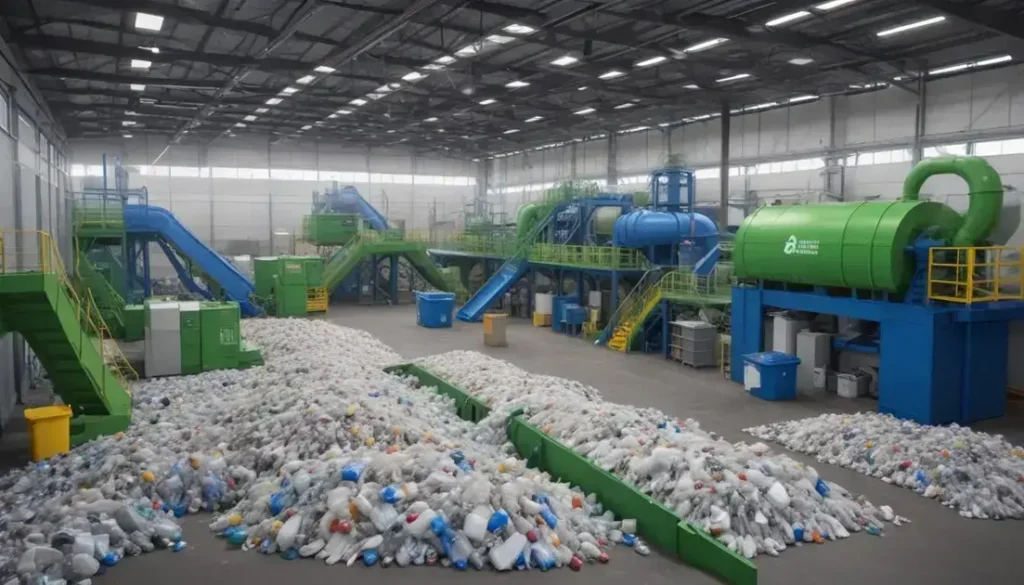Green energy in global technology focuses on integrating renewable sources like solar and wind, enhancing sustainability while driving innovation and economic growth by reducing carbon footprints and fostering collaborations between businesses and governments.
Are you aware of how green energy initiatives in Australia can shape business landscapes? This strategic move is about much more than just technology; it’s a sustainable future that encompasses economic growth. Let’s explore what this means for Indian businesses!
Overview of Amazon’s investment in Australia
Amazon’s significant investment in Australia aims to enhance its infrastructure and bolster its operations in the region. This move includes the establishment of advanced data centres powered by renewable energy, which align with global sustainability goals. By focusing on green technology, Amazon not only boosts its operational efficiency but also contributes positively to the environmental landscape.
Moreover, these data centres will be equipped with cutting-edge technology to ensure high performance and reliability. They will facilitate various services, including cloud computing and AI-driven solutions, catering to local and international businesses. This investment reflects a strategic commitment to expanding Amazon’s footprint while prioritising sustainable practices.
Importantly, Amazon’s investment is expected to generate numerous jobs in the tech sector, promoting skills development in the Australian workforce. By collaborating with local educational institutions, Amazon can foster training programs that focus on the latest technological advancements. This initiative is beneficial not only for Amazon but also for the overall growth of the technology ecosystem in Australia, creating a win-win situation.
Impact on AI and cloud services
The expansion of Amazon’s infrastructure in Australia significantly impacts AI and cloud services. As new data centres come online, businesses can expect enhanced capabilities in data processing and storage. This upgrade is crucial for companies that rely heavily on real-time data analytics and machine learning applications.
Moreover, the integration of advanced cloud services allows businesses to scale their operations efficiently. Companies can easily access powerful computing resources, reducing the need for extensive on-premises hardware. This efficiency leads to lower operational costs and fosters innovation.
With Amazon’s focus on renewable energy, these data centres not only support cutting-edge technology but also contribute to sustainability goals. The emphasis on green energy reduces the carbon footprint associated with cloud computing, allowing businesses to align with global sustainability initiatives.
Additionally, Amazon is expected to offer new AI-driven solutions tailored for various industries. These innovations will empower businesses in sectors like healthcare, finance, and retail to harness the full potential of data, driving better decision-making and customer experiences.
Role of renewable energy in data centres
The role of renewable energy in data centres is pivotal for promoting sustainability and enhancing operational efficiency. As companies like Amazon invest in green technologies, data centres can leverage solar, wind, and hydroelectric power to reduce their carbon footprint significantly. This shift not only supports environmental goals but also addresses growing concerns about energy consumption in the tech industry.
Utilizing renewable energy sources enables data centres to operate in a more cost-effective manner. By relying on cheaper, sustainable energy, they can optimize their power usage effectiveness (PUE), lowering electricity costs over time. This is particularly important for large-scale operations that require substantial power input while maintaining optimal performance.
Moreover, renewable energy integration enhances reliability and resilience. By diversifying energy sources, data centres can protect themselves from fluctuations in energy prices and utility disruptions. This stability is crucial for businesses dependent on continuous uptime to service their clients.
Additionally, increasing the efficiency of data centres through renewable energy solutions contributes to a positive corporate image. Companies demonstrating a commitment to sustainability can strengthen their market position and attract clients who prioritize environmental responsibility.
Amazon’s solar projects in Australia
Amazon’s solar projects in Australia represent a significant commitment to renewable energy and sustainability. These initiatives focus on developing large-scale solar farms that generate clean energy to power their data centres. By harnessing the abundant sunshine in Australia, Amazon aims to reduce its carbon footprint while supporting local energy needs.
The solar farms are designed to be integrated seamlessly with existing infrastructures. This integration allows Amazon to optimize energy use and provide reliable power to its operations. With the capacity to produce substantial amounts of energy, these projects will significantly contribute to the company’s goal of achieving 100% renewable energy by the end of the decade.
Furthermore, these solar initiatives not only benefit Amazon but also promote job creation in the local community. Construction and maintenance of the solar farms will provide new opportunities for skilled workers, fostering economic growth in the region. Local businesses can also benefit from partnerships and contracts related to the development of these projects.
By investing in solar energy, Amazon positions itself as a leader in sustainable practices. These efforts resonate with environmentally conscious consumers and businesses alike, reinforcing Amazon’s brand image as a responsible entity committed to a greener future.
The carbon footprint and AI computing
The carbon footprint associated with AI computing is a crucial consideration as the demand for data processing grows. AI systems require significant computational power, which can lead to high energy consumption. As businesses increasingly adopt AI technologies, it becomes essential to evaluate their environmental impact.
In many cases, AI applications are run on powerful data centres that rely heavily on fossil fuels. This dependency contributes to greenhouse gas emissions, highlighting the need for a shift towards renewable energy sources. Companies must prioritize sustainability initiatives to mitigate their carbon footprints while leveraging AI’s benefits.
To reduce emissions, organizations can implement strategies such as optimizing algorithms for efficiency, utilizing energy-efficient hardware, and adopting green technologies. Transitioning to renewable energy sources not only decreases reliance on traditional power but also enhances a company’s reputation as an environmentally responsible entity.
Moreover, the integration of AI in various sectors can promote sustainability. For instance, AI can optimize supply chain logistics, reducing waste and improving resource allocation. By focusing on these advancements, businesses can harness the power of AI while minimizing its negative environmental impact.
Training programs for the workforce
Training programs for the workforce play a vital role in equipping employees with the necessary skills to thrive in a technology-driven environment. As companies like Amazon expand their operations, they must ensure their workforce is prepared for the challenges ahead. These programs focus on enhancing skills related to artificial intelligence, data analysis, and renewable energy technologies.
By offering specialized training, companies help employees gain expertise in new tools and methodologies. This investment not only boosts individual performance but also drives overall organizational effectiveness. Furthermore, training programs foster a culture of continuous learning, making it easier for businesses to adapt to rapid changes in the marketplace.
The integration of hands-on experience is crucial in these training initiatives. Practical workshops, simulations, and collaborative projects prepare workers for real-world scenarios. Additionally, partnerships with educational institutions provide valuable resources and insights, ensuring that the training meets industry demands.
Importantly, upskilling the workforce promotes job security and growth opportunities for employees. As they acquire new skills, they become more valuable to the organization, which in turn encourages employee retention and satisfaction. Ultimately, robust training programs create a formidable workforce ready to tackle the future challenges of the evolving business landscape.
Collaborations with the Australian government
Collaborations with the Australian government are pivotal for advancing sustainable technology initiatives. Companies like Amazon are actively engaging with various governmental agencies to align their renewable energy projects with national sustainability goals. These partnerships facilitate the sharing of resources, knowledge, and best practices, ultimately enhancing the impact of corporate initiatives.
By working closely with the government, businesses can access funding opportunities and grants aimed at promoting innovative technologies. This financial support helps organisations invest in large-scale projects that may otherwise be too costly. Additionally, these collaborations enable companies to benefit from regulatory support that can streamline compliance processes and expedite project approvals.
Moreover, such partnerships can foster public awareness and community engagement regarding renewable energy solutions. Through joint initiatives, companies and the government can educate citizens about the importance of sustainability and the role they play in reducing environmental impact. This can lead to greater community support for renewable energy projects, ensuring their long-term success.
Furthermore, collaborations can drive research and development efforts, enabling the exploration of cutting-edge technologies that enhance energy efficiency. By combining expertise from both sectors, innovative solutions can emerge, paving the way for a greener and more sustainable future in Australia.
Economic opportunities and benefits
The expansion of sustainable technology initiatives in Australia presents significant economic opportunities and benefits. With companies like Amazon investing in renewable energy and AI, the local economy can experience substantial growth. These initiatives create numerous jobs in various sectors, from construction and engineering to research and development.
One of the key benefits includes the stimulation of local businesses. As large corporations establish data centres and renewable energy projects, they require various services and products. This demand can lead to partnerships with local suppliers and foster growth in small and medium-sized enterprises (SMEs).
Moreover, the transition to green technologies can enhance energy efficiency and reduce operational costs for businesses. By investing in renewable energy sources, companies can lower their energy bills and increase profit margins. This shift not only benefits individual businesses but also contributes to the overall economic health of the region.
Additionally, governments may provide incentives and grants for businesses embracing sustainability. These financial supports can further ease the transition to clean energy, making it more feasible for companies to invest in eco-friendly solutions. Ultimately, the focus on sustainability aligns with global trends, attracting investment and boosting Australia’s position in the international market.
Data centre infrastructure growth
The growth of data centre infrastructure is a critical aspect of the technological landscape in Australia. As companies like Amazon expand their operations, the demand for robust and efficient data centres increases significantly. These facilities are essential for processing vast amounts of data and providing cloud services to businesses across various sectors.
New technologies are being implemented in the construction of these data centres to ensure they are energy-efficient and environmentally friendly. Innovations such as modular designs and advanced cooling systems help reduce energy consumption while enhancing performance. This focus on sustainability aligns with global trends aiming to minimize the carbon footprint associated with digital technologies.
Additionally, the rapid expansion of data centre infrastructure supports the burgeoning demand for cloud computing services. Businesses are increasingly relying on cloud solutions to improve scalability, flexibility, and accessibility. This, in turn, drives the need for more data centres equipped with state-of-the-art technology.
Furthermore, the growth in this sector creates job opportunities, ranging from construction roles to highly skilled positions in IT and systems management. Investments in data centre infrastructure not only support technological advancements but also contribute to economic growth, making Australia a competitive player in the global digital economy.
Future of green energy in global tech
The future of green energy in global technology appears promising as more companies and governments prioritize sustainable practices. With increasing awareness of climate change, the tech industry is setting ambitious goals to reduce carbon footprints and transition towards renewable energy sources. Innovations in solar, wind, and hydropower are critical components of this shift.
As technology evolves, the efficiency of renewable energy systems continues to improve. Breakthroughs in battery storage technology and energy management systems allow for better integration of renewable sources into existing infrastructures. This innovation ensures a reliable energy supply while maximizing the benefits of clean energy.
Moreover, the growth of electric vehicles (EVs) and green data centres highlights the tangible impact of green energy on the tech sector. As more businesses adopt sustainable practices, the demand for eco-friendly solutions will rise, driving investment in research and development. This transition not only fosters technological advancement but also creates economic opportunities.
Collaboration between governments, private sectors, and research institutions will be vital in establishing a robust green energy framework. By working together, stakeholders can accelerate the adoption of clean technologies and ensure a sustainable future. Ultimately, embracing green energy will not only enhance technological innovation but also contribute to a healthier planet for future generations.
In Conclusion, Embracing a Sustainable Future
As we look towards the future, the importance of integrating green energy and technology cannot be overstated. The collaboration between businesses, governments, and communities is essential for promoting sustainable practices and driving innovation.
By investing in renewable energy and enhancing data centre infrastructures, we can create significant economic opportunities while reducing our impact on the environment. This transition not only leads to technological advancements but also fosters job creation and overall growth.
As we adopt these solutions, it is vital that we remain committed to sustainability. Together, we can pave the way for a greener, more efficient future that benefits everyone.
Embracing green energy and technology is not just an option; it is a necessity for a healthier planet and a brighter tomorrow.
People Also Ask
What role does green energy play in technology today?
Green energy is crucial in technology as it reduces carbon footprints and supports sustainable practices, making tech operations more eco-friendly.
How can businesses benefit from collaborating with the government on renewable energy projects?
Collaborating with the government can provide businesses access to funding, regulatory support, and increased public awareness about sustainability.
What are the economic opportunities linked to renewable energy infrastructure?
Economic opportunities include job creation, partnerships with local businesses, and reduced operational costs for companies utilizing renewable energy sources.
Why is data centre infrastructure growth important for tech companies?
The growth of data centre infrastructure is vital as it supports increased data processing needs, enhances cloud services, and fosters rapid technological advancement.
How can companies ensure their training programs are effective?
Companies can ensure training effectiveness by incorporating hands-on experience, collaborating with educational institutions, and continuously evaluating the training impact.
What is the future of green energy in the global tech landscape?
The future of green energy in tech involves increased reliance on renewable sources, improved energy efficiency, and the development of innovative technologies to combat climate change.


